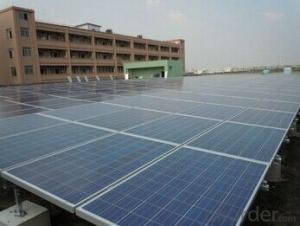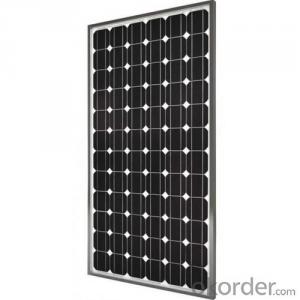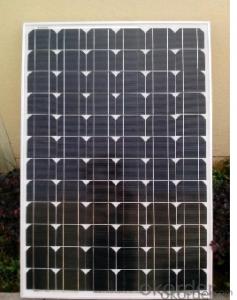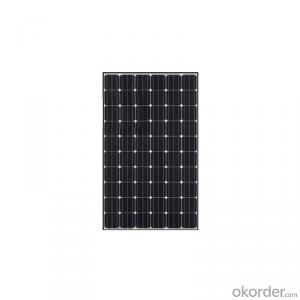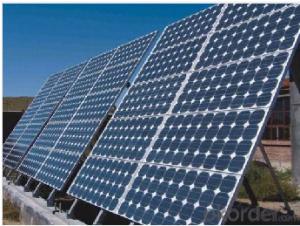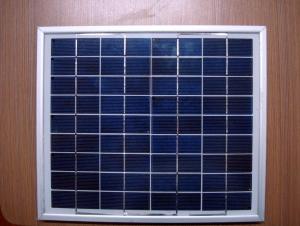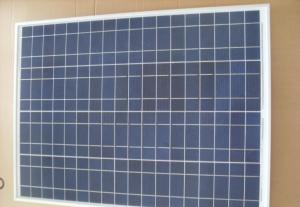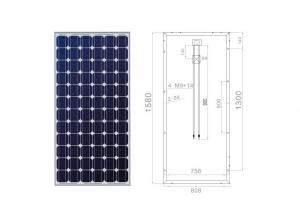75w-100w Mono Solar Panels, Solar System - Printable Solar Panels
- Loading Port:
- Shanghai
- Payment Terms:
- TT OR LC
- Min Order Qty:
- 200 pc
- Supply Capability:
- 99999 pc/month
OKorder Service Pledge
OKorder Financial Service
You Might Also Like
75W-100W Mono Solar Panels, Solar System
Specifications
1. 75-100W Mono crystalline solar
2. Super quality competitive price
3. solar system
Product Description
Material: Monocrystalline Silicon
Size: 1205*545*35mm
Number of Cells: 36
Max. Power: 75-100
Voc[V]: 21.8-22.6
Isc[A]: 4.85-6.03
Vmp[V]: 18.0-18.7
Imp[A]: 4.17-5.34
Module area [m]: 0.66
Module weight [kg]: 8
Features
High module conversion efficiency, through superior manufacturing technology Guaranteed -1% to +3% Power Tolerance Entire module certificated to withstand high wind loads and snow loads (5400Pa) Anodized aluminum is mainly for improving corrosion resistance.
Highly transparent, low-iron, tempered glass, and antireflective coating Excellent performance under low light environments
Benefits
25-year warranty on power output; 5-year warranty on materials and workmanship Product liability insurance
Local technical support
Local warehousing
48 hour-response service
Enhanced design for easy installation and long term reliability
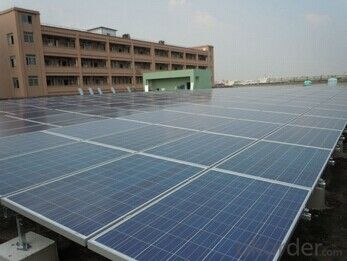
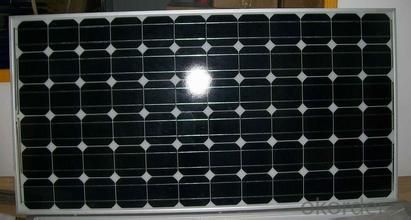
FAQ
Is solar power difficult to use?
Although the production of solar panels incorporates a high-tech manufacturing process, it is really very easy to use a photovoltaic system. Solar panels have no moving parts to wear out, they can be used alone or in combination with other energy sources, and they are silent, reliable and long lasting.
What can you power with Photovoltaics?
A properly designed photovoltaic system can supply electricity for many applications, from small remote lighting needs to megawatts of power for large utility companies. An advantage of photovoltaic power is that it can do anything a traditional power generator can do, only without consuming pollution-causing fuel, or requiring noisy motors.
What is a PV system?
A PV system consists of all the equipment and materials needed to generate solar energy, including solar panels (often called modules), a support structure, wiring, an inverter, a meter and other equipment as required by a specific application. JUST-SOLAR's PV system for commercial buildings, and ET Solar system for residential uses are examples of complete PV systems.
What is a solar module?
Solar modules are series of solar cells, wired together and enclosed protect them from the environment. They are often referred to as in self-contained glass units to solar panels as well.
How do solar cells work?
Solar cells are solid-state devices in which photons (or packets of light) collide with atoms. This process transforms the resulting into electrons. These electrons flow into wires connected to the cell, thus providing electric current to appliances, lighting systems or other electrical loads; and all of the power comes directly from the sun.
What is Photovoltaic Power?
Photovoltaic (PV) power is a term used to describe the process of converting sunlight into electricity with solar cells. These cells are specially constructed from semiconductor materials, and are treated to generate a flow of electricity when sunlight shines on them
- Q: Can solar panels power a whole house?
- Yes, solar panels can power a whole house. The number of solar panels required will depend on the energy needs of the house and the amount of sunlight available in the location. With the right system size and proper installation, solar panels can generate enough electricity to meet the power requirements of a house, allowing it to run on clean and renewable energy.
- Q: Can solar panels be used in areas with high levels of saltwater?
- Yes, solar panels can be used in areas with high levels of saltwater. However, it is important to choose solar panels that are specifically designed for such conditions and have corrosion-resistant materials. Additionally, regular maintenance and cleaning of the panels may be required to prevent damage from salt build-up.
- Q: i was told that by making a solar panel they cause more pollution than they will end up getting rid of. Is that true?
- Long ago, say, in the 960's, it was true that solar cells did not return the energy of their manufacture. In those days, cells were 4% efficient, and made with more material and a less efficient process. Unfortunately, the myth persists that this is still the case today from unaccredited sources. Kudos to Michael for the nrel link. That study was actually done over 0 years ago, and since then, technology has advanced even further. Manufacturers have been able to reduce the thickness of cells in general in the last decade, to use less crystalline silicon. Also manufacturers such as Suntech with their pluto process are now able to use a lower grade of silicon, that takes less energy to refine. The result is that the energy payback time is even shorter today than estimated in the linked paper.
- Q: I want to plug my solar system battery bank into my transfer switch on my cabin when not using a generator. The transfer switch will handle 220 volt from my generator. How do I get a 220 volt inverter that runs 60 hz or do all of them run 50 hz.I see plenty of 20 volt 60 hz. I'm at the point of needing to order one and I'm not sure.
- Stand Alone solar panel inverters function to change direct current (DC) from a battery to Alternating Current (AC). Stand alone inverters, which range from around 00 watts to as much as 8000 watts, are used to power a vast variety of personal or small business projects. Lower watt stand-alone inverters are often used to power laptop computers, whereas high-watt stand-alone inverters could be used to help power an entire household. In order to calculate what class of inverter you need for use with your solar panel, you will first have to determine the maximum sum of all of the Alternating Current loads in your project (or home). How to calculate the wattage you need from your stand-alone solar panel inverter
- Q: Can solar panels power an entire home?
- Yes, solar panels can power an entire home. The number of solar panels required will depend on the energy needs of the home and the efficiency of the panels. With the right setup and sufficient sunlight, solar panels can generate enough electricity to cover the energy consumption of a household.
- Q: Can solar panels be installed on historical buildings?
- Yes, solar panels can be installed on historical buildings. However, the installation process may require careful planning and consideration to ensure that the historical integrity and architectural significance of the building are not compromised.
- Q: Can I add reflectors or mirrors around the solar panels to increase the power they generate?
- You could (an example of concentrating sunlight is called cloud gain, where the edge of a cloud will intensify sunlight as it passes between the sun and your panels), but that will make your panels run hotter and will probably reduce their life. It's better from a system design standpoint to simply get another panel or two. DK
- Q: Can solar panels be installed on a building with historical significance?
- Yes, solar panels can be installed on a building with historical significance. However, it is important to consider the potential impact on the building's aesthetics and historical value. Careful planning and consultation with preservation experts can help ensure that the installation is done in a way that minimizes any negative visual or structural impact on the building while still harnessing the benefits of solar energy.
- Q: In nature, green leaves collect light and produce energy. Is this what they copied to make solar panels? If not how hard would it be to make artificial leaves that would power our homes?
- Solar panels were not made to copy leaves. Leaves have molecules that become excited when they are hit by light. They store this energy in ADP molecules and ATP molecules. This works great for biological processes, but until we learn how to use Adenosine Di/Triphosphate to transport energy, we are better off sticking with our solar panels. They produce electricity, which we know how to use.
- Q: Are there any restrictions on installing solar panels in certain areas?
- Yes, there can be restrictions on installing solar panels in certain areas. These restrictions can vary depending on local regulations, zoning laws, homeowners' association rules, and building codes. Some areas may have height restrictions, setback requirements, or aesthetic guidelines that limit the placement or visibility of solar panels. Additionally, historic districts or areas with protected landscapes may have stricter regulations. It is important to check with local authorities and consult any relevant guidelines or permits before installing solar panels in a specific area.
Send your message to us
75w-100w Mono Solar Panels, Solar System - Printable Solar Panels
- Loading Port:
- Shanghai
- Payment Terms:
- TT OR LC
- Min Order Qty:
- 200 pc
- Supply Capability:
- 99999 pc/month
OKorder Service Pledge
OKorder Financial Service
Similar products
Hot products
Hot Searches
Related keywords
